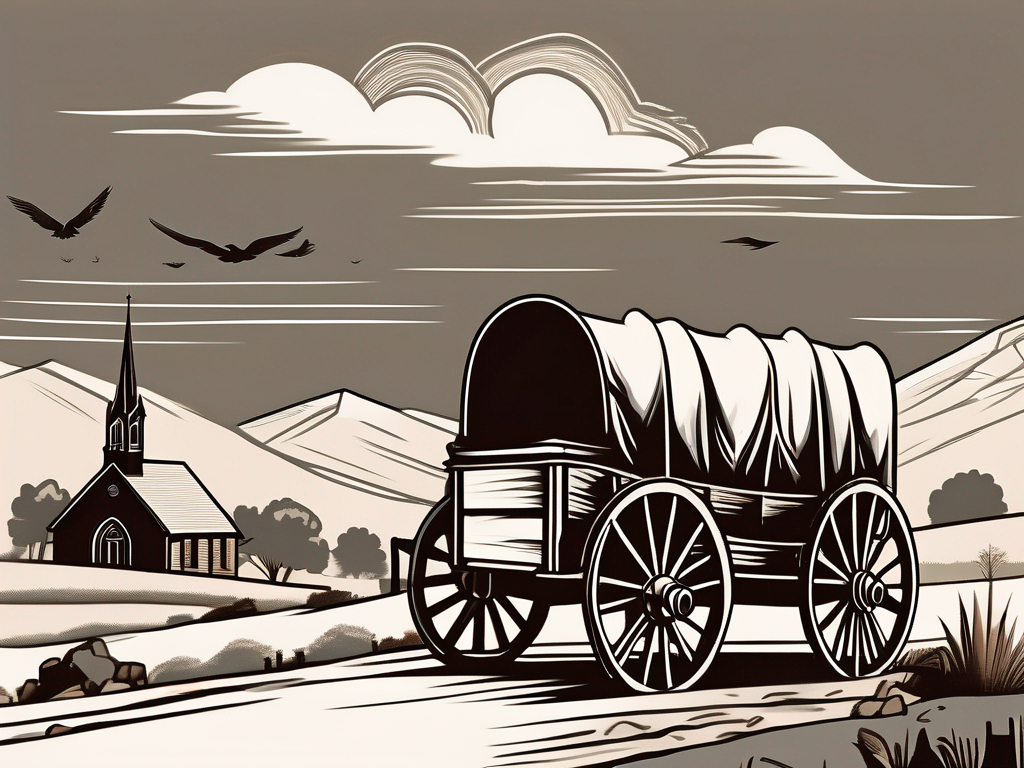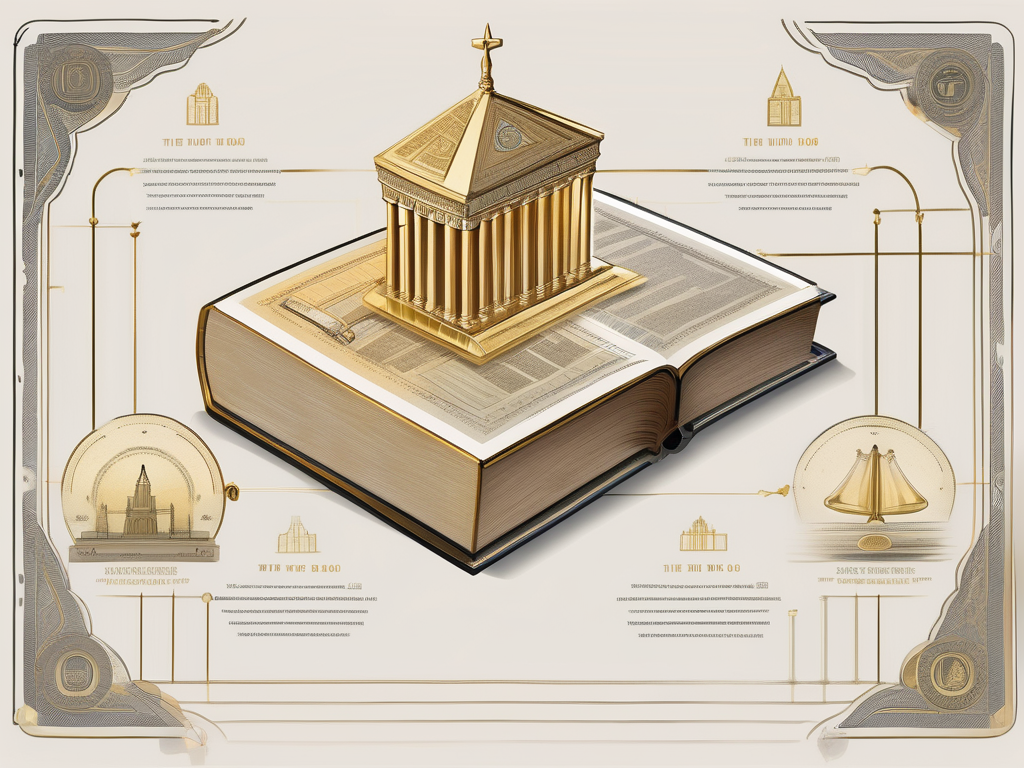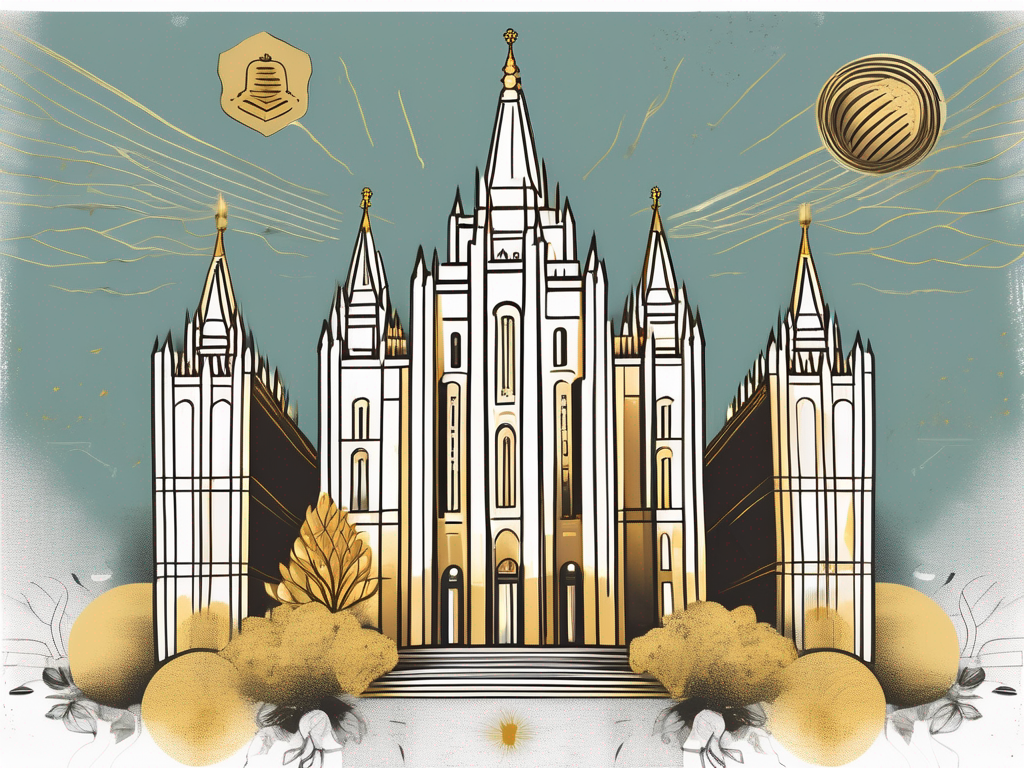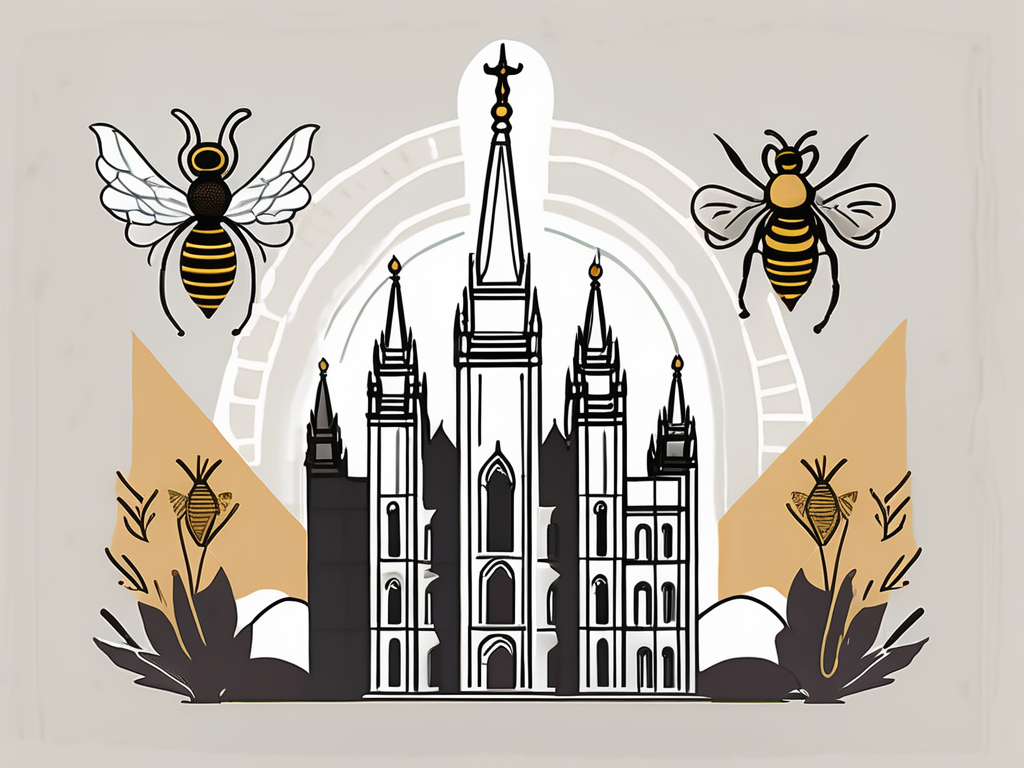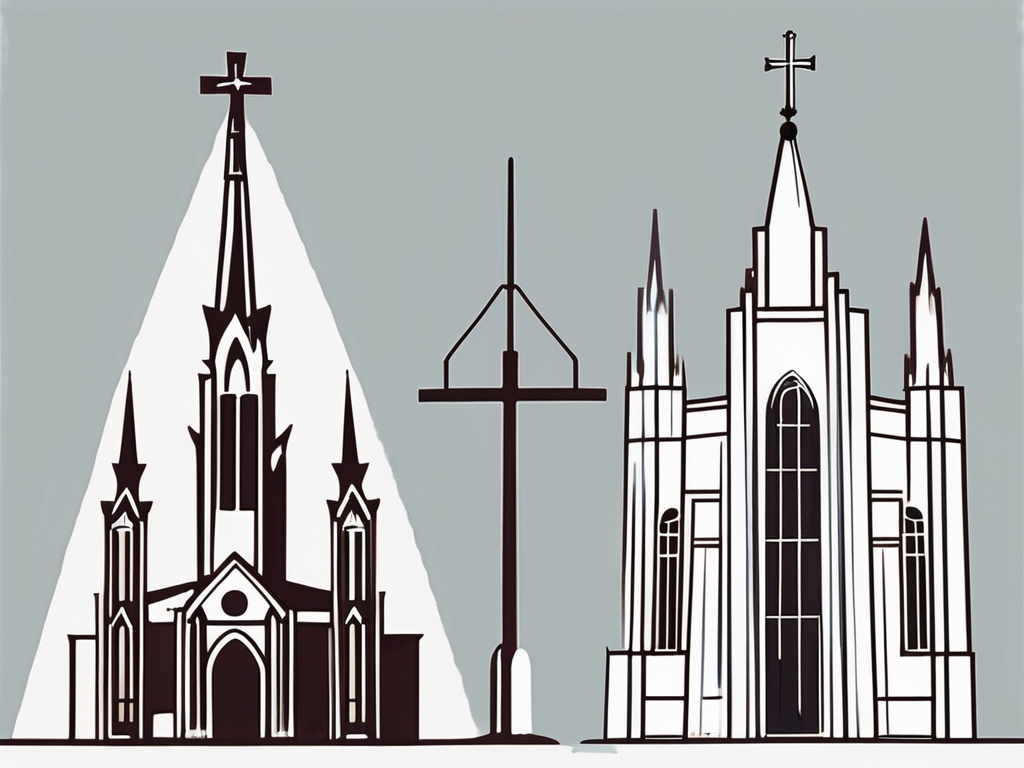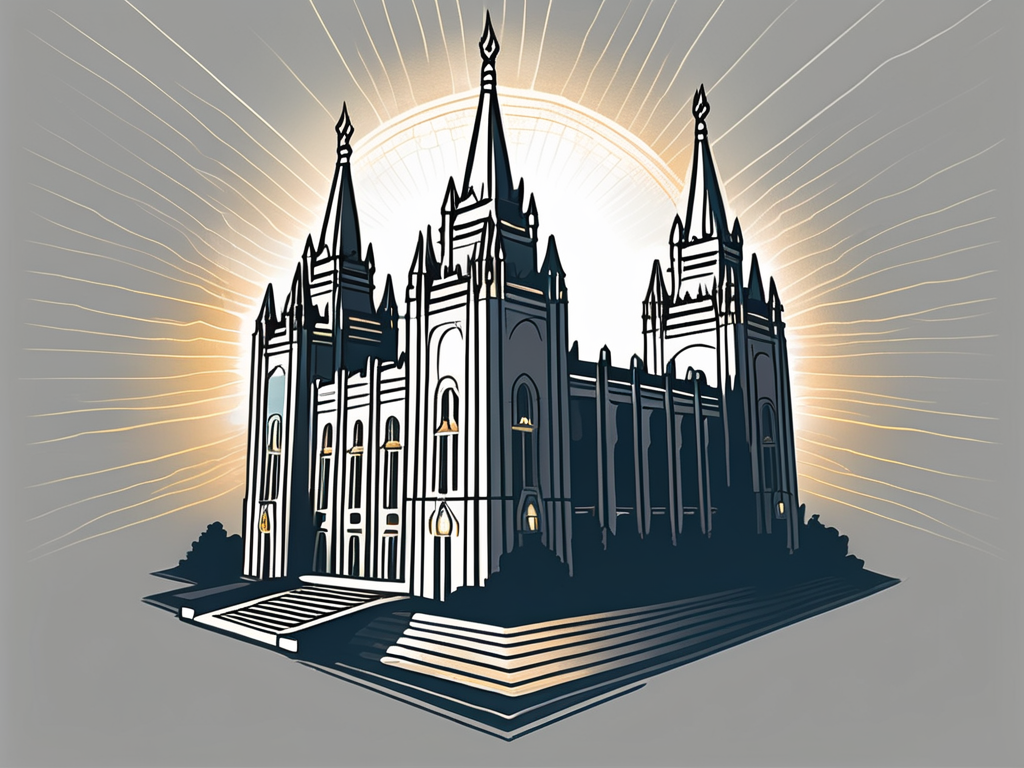Mormonism is a fascinating and often misunderstood religion that is based on a unique set of beliefs and teachings. In order to truly understand Mormonism, it is important to delve into its origins, core beliefs, structure, and practices. By exploring these different aspects, we can gain a deeper appreciation for what the Mormon religion is based on and how it has evolved over time.
Understanding the Origins of Mormonism
The foundations of Mormonism can be traced back to the early 19th century in upstate New York. It was during this time that Joseph Smith, a young man seeking answers to profound religious questions, claimed to have experienced divine revelations and encounters with heavenly beings.
Looking to establish a new religious movement, Joseph Smith founded The Church of Jesus Christ of Latter-day Saints in 1830. This marked the birth of Mormonism and the beginning of a movement that would gather followers from all walks of life.
The Founding of the Church of Jesus Christ of Latter-day Saints
The establishment of The Church of Jesus Christ of Latter-day Saints marked a monumental moment in religious history. Joseph Smith claimed that he had been visited by God the Father and Jesus Christ and was chosen to be a prophet and restore the true gospel, which had been lost over time.
Smith translated what is known as the Book of Mormon, which he claimed to have received from an ancient prophet named Mormon. This book serves as an additional testament of Jesus Christ and is regarded by Mormons as scripture alongside the Bible.
The Book of Mormon provides a detailed account of ancient civilizations in the Americas and their interactions with God. It tells the story of a group of Israelites who migrated to the Americas and established a prosperous civilization. The book also includes the teachings of Jesus Christ during his visit to the Americas after his resurrection.
With the publication of the Book of Mormon, Joseph Smith attracted a growing number of followers who believed in his divine calling. The Church of Jesus Christ of Latter-day Saints quickly gained momentum and began to spread beyond New York, attracting converts from various backgrounds.
Key Figures in Early Mormonism
In addition to Joseph Smith, there were several other key figures who played crucial roles in the early days of Mormonism. One of these figures was Brigham Young, who succeeded Smith as the leader of the Mormon Church after his untimely death. It was under Young’s leadership that the Mormons embarked on a great westward migration, eventually settling in what is now the state of Utah.
Brigham Young’s leadership was characterized by determination and resourcefulness. He led the Mormons through challenging times, including persecution and the hardships of the journey west. Under his guidance, the Mormons established thriving communities in Utah, transforming the desert landscape into a prosperous and self-sustaining society.
Another influential figure in early Mormonism was Emma Smith, Joseph Smith’s wife. Emma played a significant role in supporting her husband and preserving important religious texts and records, including the Book of Mormon. She was known for her strength and resilience in the face of adversity, and her contributions to the early Mormon movement cannot be overstated.
Emma Smith’s involvement in the translation and publication of the Book of Mormon was instrumental in spreading the message of Mormonism. She diligently assisted Joseph Smith in his work, serving as a scribe and providing moral support. Her dedication and commitment to the cause helped establish the foundation of the faith.
As the early Mormon movement grew, more individuals emerged as influential figures, each contributing to the development and expansion of the religion. Their stories and contributions continue to shape the beliefs and practices of Mormons today.
Core Beliefs and Teachings of Mormonism
At the heart of Mormonism are its core beliefs and teachings, which reflect a unique interpretation of Christianity. Mormons believe in the divinity of Jesus Christ and his role as the Savior and Redeemer of mankind. They also believe in the importance of personal revelation and the ability of individuals to receive guidance and inspiration from God.
Mormonism places a strong emphasis on the family unit and the eternal nature of relationships. Mormons believe that families can be together forever through sacred ordinances performed in temples. These ordinances include marriage ceremonies and the sealing of families for eternity, ensuring that loved ones can continue their relationships beyond death.
The Book of Mormon: Another Testament of Jesus Christ
Central to Mormon belief is the Book of Mormon, which Mormons consider to be scripture on par with the Bible. The Book of Mormon is said to contain an account of ancient civilizations that lived in the Americas and their interactions with God. It tells the story of a prophet named Lehi and his family, who were led by God to the Americas and established a civilization. The Book of Mormon also includes the teachings of Jesus Christ during his visit to the Americas after his resurrection.
Through the Book of Mormon, Mormons believe they can gain a deeper understanding of God’s plan and teachings. They study its teachings alongside the Bible, finding harmony and additional insights that strengthen their faith.
The Doctrine and Covenants and Pearl of Great Price
In addition to the Bible and the Book of Mormon, Mormons also recognize two other important volumes of scripture. The Doctrine and Covenants contains revelations and teachings received by Joseph Smith and subsequent prophets. These revelations address various aspects of doctrine, church organization, and principles of righteous living. They provide guidance to members of the Church of Jesus Christ of Latter-day Saints, commonly known as Mormons, on how to live their lives in accordance with God’s will.
The Pearl of Great Price includes additional scripture and revelations. It contains the Book of Moses, which provides an expanded account of the creation and early history of the world. It also includes the Book of Abraham, which is a translation of ancient Egyptian papyri that Joseph Smith claimed to have received by revelation. The Pearl of Great Price further contains Joseph Smith’s inspired translation of portions of the Bible, known as the Joseph Smith Translation.
These various books of scripture form the foundation of Mormonism and provide guidance and insight into the beliefs and practices of the religion. Mormons study and ponder these texts, seeking to apply their teachings in their daily lives and deepen their relationship with God.
The Structure and Organization of the Mormon Church
Mormonism is known for its unique structure and organization, which sets it apart from many traditional Christian denominations. The hierarchical structure of the church ensures that there is a clear chain of command and a unified direction for its members.
The Role of the Prophet and Apostles
At the head of The Church of Jesus Christ of Latter-day Saints is the President, who is regarded as a prophet, seer, and revelator. The President is considered to be God’s chosen representative on Earth and receives direct revelation from Him. This divine communication allows the President to guide the church and provide spiritual direction to its members.
Below the President are twelve apostles, who serve as his counselors and help lead the church. These apostles are also considered to be prophets, seers, and revelators and hold important decision-making roles within the church. They are responsible for teaching and interpreting the scriptures, providing guidance to the members, and ensuring the unity of the church.
Each apostle is chosen through a process of divine revelation and is sustained by the members of the church during a general conference. This process ensures that those called to serve as apostles are chosen by God and are qualified to receive and interpret His will.
The Importance of Temples and Missions
Temples hold a central place in Mormon worship and serve as sacred spaces for special ordinances and ceremonies. Mormons believe that through these ordinances, families can be sealed together for eternity and attain exaltation in the afterlife. The temple ceremonies include sacred rituals such as baptism for the dead, endowments, and celestial marriage.
Temples are considered to be the house of the Lord, and their construction and maintenance require a significant commitment from the members of the church. Mormons view temples as a place of spiritual refuge and seek to attend regularly to participate in these sacred ordinances.
In addition, Mormon missions play a significant role in the religion. Young men and women are encouraged to serve missions, during which they spread the teachings of Mormonism and serve communities around the world. These missions are seen as an opportunity for young adults to deepen their faith, develop leadership skills, and share the gospel with others.
Missionaries are assigned to various locations across the globe and spend a significant amount of time studying the scriptures, learning the local language and culture, and engaging in community service. They strive to build relationships with individuals and families, sharing the message of Jesus Christ and inviting others to learn about the Mormon faith.
During their missions, missionaries often experience personal growth and gain a deeper understanding of their own beliefs. They learn to rely on their faith and develop a strong sense of dedication and commitment to their mission and the church.
Mormon Practices and Rituals
Mormons engage in a variety of practices and rituals that further enrich their religious experience. These practices not only strengthen their faith but also foster a sense of community and unity among the members.
Baptism and Confirmation in the Mormon Church
Baptism is an essential ceremony in Mormonism, where individuals are immersed in water as a symbol of their commitment to follow Jesus Christ. This sacred act represents a spiritual rebirth and the washing away of sins. The process of baptism involves a series of preparatory steps, including meeting with church leaders, studying the teachings of the church, and demonstrating a sincere desire to live according to the principles of Mormonism.
After the baptism, individuals are confirmed members of the church and receive the gift of the Holy Ghost. This ordinance is performed by the laying on of hands by authorized priesthood holders. The Holy Ghost is believed to be a constant companion, providing guidance, comfort, and inspiration to those who have received this sacred gift.
The Significance of the Sacrament
The sacrament, also known as the Lord’s Supper, is a key part of Mormon worship services. It involves partaking of bread and water, which represent the body and blood of Jesus Christ, in remembrance of His Atonement. This sacred ordinance is performed weekly and serves as a time for reflection, renewal, and rededication.
During the sacrament, members of the congregation are invited to ponder on their relationship with God, repent of their sins, and renew their covenants with Him. It is a solemn and reverent moment as individuals strive to align their lives with the teachings of Jesus Christ and seek forgiveness for their shortcomings.
As the bread and water are passed among the members, they are reminded of the sacrifice made by Jesus Christ for the salvation of all mankind. This act of partaking symbolizes a personal commitment to follow His example, strive for righteousness, and remember His love and mercy.
Moreover, the sacrament is a time for unity and fellowship. It brings the congregation together as they collectively partake of the emblems, strengthening their bond as members of the Mormon community. It is a moment of shared devotion, where individuals can find solace and support in their common faith and belief in the teachings of the Church of Jesus Christ of Latter-day Saints.
Controversies and Misunderstandings about Mormonism
Over the years, Mormonism has been the subject of controversies and misunderstandings that have contributed to the religion’s mystique.
Polygamy and the Mormon Church
One of the most well-known controversies surrounding Mormonism is the practice of polygamy. In the early days of the church, some members practiced plural marriage, which caused significant social and legal tensions. However, the church officially abandoned the practice in 1890.
The Mormon Church and Racial Issues
Another area of controversy revolves around the Mormon Church’s stance on racial issues. Historically, the church prohibited individuals of African descent from holding the priesthood or participating in certain temple ordinances. This practice was changed in 1978 when the church announced that all worthy males, regardless of race, could receive the priesthood.
In conclusion, the Mormon religion is based on a rich tapestry of origins, beliefs, practices, and controversies. Understanding the origins of Mormonism, its core beliefs, its unique structure, and its practices and rituals allows us to grasp the essence of what the Mormon religion is based on. By exploring these different aspects, we gain a greater appreciation for the complexities and diversity within the Mormon faith and can foster a more nuanced understanding of this fascinating religion.

